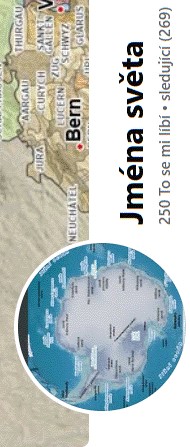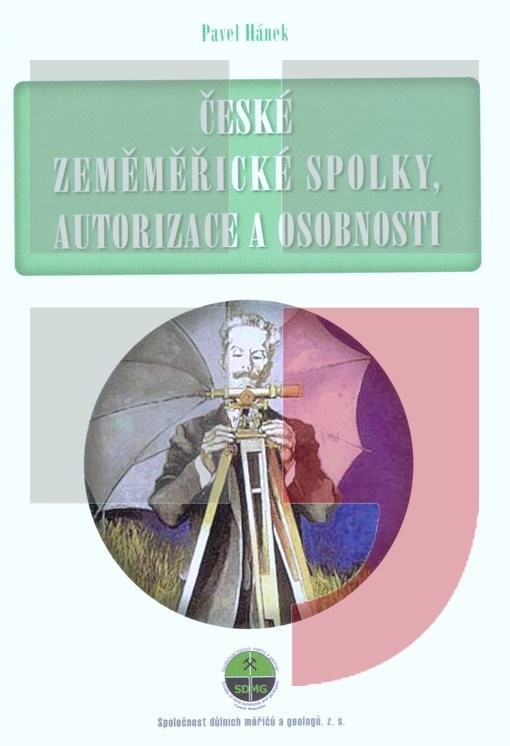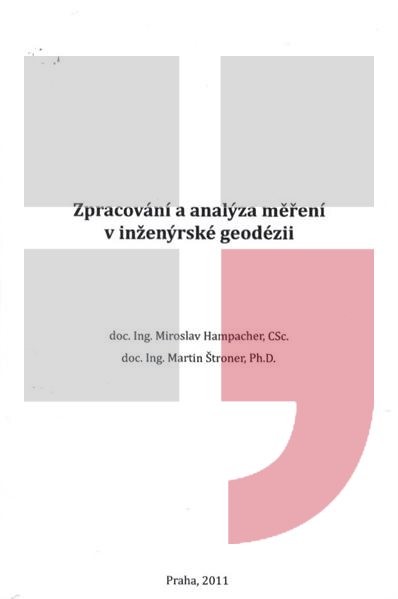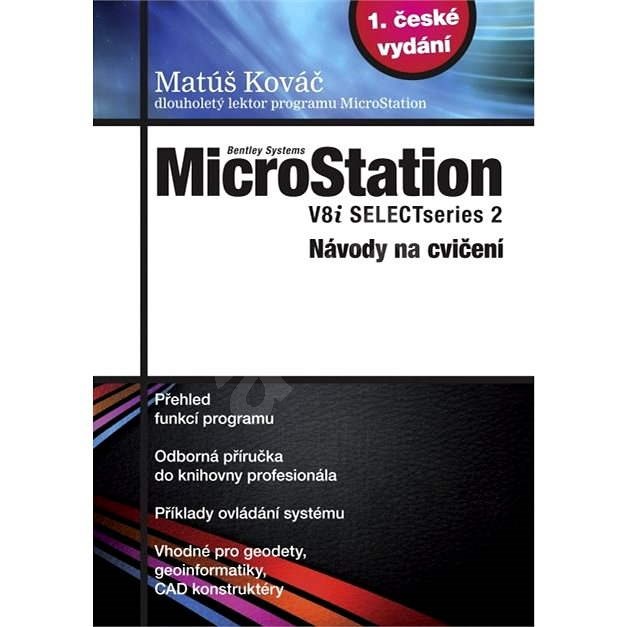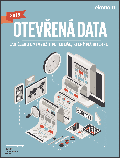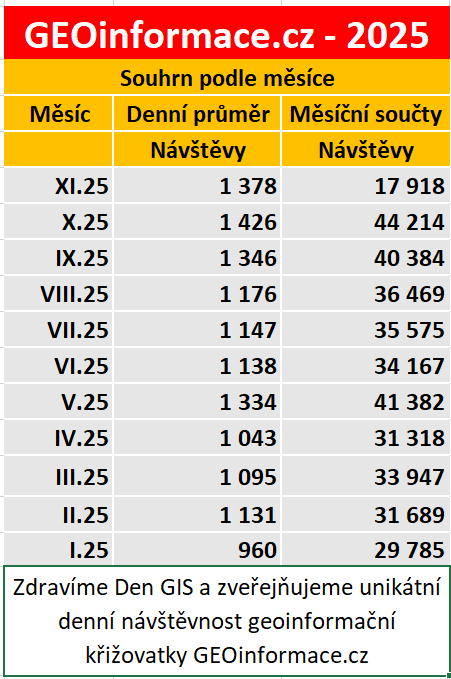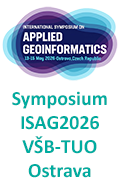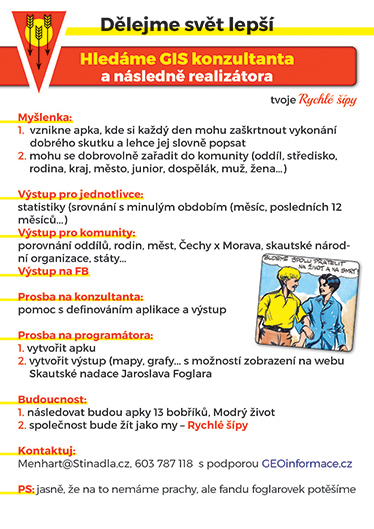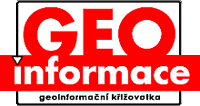3.2.2016 15:28
ČÚZK - předpisy a opatření
/Urady/Katastralni-urady/Katastralni-urady/Katastralni-urad-pro-Stredocesky-kraj/O-uradu/Aktuality/20152509-Oznameni-na-reditele-TS,-PZ-a-PV-(2)
3.2.2016 15:25
ČÚZK
/Urady/Katastralni-urady/Katastralni-urady/Katastralni-urad-pro-Stredocesky-kraj/Uredni-deska/Oznameni-a-jina-uredni-sdeleni/Volna-mista/vedouci-oddeleni-dokumentace-katastru-nemovitosti
3.2.2016 15:25
ČÚZK - volná místa
/Urady/Katastralni-urady/Katastralni-urady/Katastralni-urad-pro-Stredocesky-kraj/Uredni-deska/Oznameni-a-jina-uredni-sdeleni/Volna-mista/vedouci-oddeleni-dokumentace-katastru-nemovitosti
3.2.2016 15:25
ČÚZK - předpisy a opatření
/Urady/Katastralni-urady/Katastralni-urady/Katastralni-urad-pro-Stredocesky-kraj/Uredni-deska/Oznameni-a-jina-uredni-sdeleni/Volna-mista/vedouci-oddeleni-dokumentace-katastru-nemovitosti
3.2.2016 15:24
ČÚZK - předpisy a opatření
/Urady/Katastralni-urady/Katastralni-urady/Katastralni-urad-pro-Stredocesky-kraj/Uredni-deska/Oznameni-a-jina-uredni-sdeleni/Volna-mista/vedouci-oddeleni-aktualizace-geodetickych-informac
3.2.2016 15:24
ČÚZK
/Urady/Katastralni-urady/Katastralni-urady/Katastralni-urad-pro-Stredocesky-kraj/Uredni-deska/Oznameni-a-jina-uredni-sdeleni/Volna-mista/vedouci-oddeleni-aktualizace-geodetickych-informac
3.2.2016 15:24
ČÚZK - volná místa
/Urady/Katastralni-urady/Katastralni-urady/Katastralni-urad-pro-Stredocesky-kraj/Uredni-deska/Oznameni-a-jina-uredni-sdeleni/Volna-mista/vedouci-oddeleni-aktualizace-geodetickych-informac
3.2.2016 15:23
ČÚZK - volná místa
/Urady/Katastralni-urady/Katastralni-urady/Katastralni-urad-pro-Stredocesky-kraj/Uredni-deska/Oznameni-a-jina-uredni-sdeleni/Volna-mista/vedouci-oddeleni-aktualizace-popisnych-informa-(1)
3.2.2016 15:23
ČÚZK - předpisy a opatření
/Urady/Katastralni-urady/Katastralni-urady/Katastralni-urad-pro-Stredocesky-kraj/Uredni-deska/Oznameni-a-jina-uredni-sdeleni/Volna-mista/vedouci-oddeleni-aktualizace-popisnych-informa-(1)
3.2.2016 15:23
ČÚZK
/Urady/Katastralni-urady/Katastralni-urady/Katastralni-urad-pro-Stredocesky-kraj/Uredni-deska/Oznameni-a-jina-uredni-sdeleni/Volna-mista/vedouci-oddeleni-aktualizace-popisnych-informa-(1)
3.2.2016 15:21
ČÚZK - volná místa
/Urady/Katastralni-urady/Katastralni-urady/Katastralni-urad-pro-Stredocesky-kraj/Uredni-deska/Oznameni-a-jina-uredni-sdeleni/Volna-mista/vedouci-oddeleni-aktualizace-popisnych-informaci-k
3.2.2016 15:21
ČÚZK - předpisy a opatření
/Urady/Katastralni-urady/Katastralni-urady/Katastralni-urad-pro-Stredocesky-kraj/Uredni-deska/Oznameni-a-jina-uredni-sdeleni/Volna-mista/vedouci-oddeleni-aktualizace-popisnych-informaci-k
3.2.2016 15:21
ČÚZK
/Urady/Katastralni-urady/Katastralni-urady/Katastralni-urad-pro-Stredocesky-kraj/Uredni-deska/Oznameni-a-jina-uredni-sdeleni/Volna-mista/vedouci-oddeleni-aktualizace-popisnych-informaci-k
3.2.2016 15:18
ČÚZK - předpisy a opatření
/Urady/Katastralni-urady/Katastralni-urady/Katastralni-urad-pro-Stredocesky-kraj/Uredni-deska/Oznameni-a-jina-uredni-sdeleni/Volna-mista/vedouci-pravniho-oddeleni-Katastralniho-pracoviste
3.2.2016 15:18
ČÚZK - předpisy a opatření
/Urady/Katastralni-urady/Katastralni-urady/Katastralni-urad-pro-Stredocesky-kraj/Uredni-deska/Oznameni-a-jina-uredni-sdeleni/Volna-mista/vedouci-pravniho-oddeleni-Katastralniho-pracoviste
3.2.2016 15:18
ČÚZK
/Urady/Katastralni-urady/Katastralni-urady/Katastralni-urad-pro-Stredocesky-kraj/Uredni-deska/Oznameni-a-jina-uredni-sdeleni/Volna-mista/vedouci-pravniho-oddeleni-Katastralniho-pracoviste
3.2.2016 15:18
ČÚZK - volná místa
/Urady/Katastralni-urady/Katastralni-urady/Katastralni-urad-pro-Stredocesky-kraj/Uredni-deska/Oznameni-a-jina-uredni-sdeleni/Volna-mista/vedouci-pravniho-oddeleni-Katastralniho-pracoviste
3.2.2016 14:59
Česká kartografická společnost
Výboru ČKS bylo v požadovaném termínu zasláno 36 návrhů nového loga společnosti. Výbor všem autorů děkuje. Na svém posledním zasedání jsme provedli předběžný výběr návrhů s tím, že konečný návrh bude projednán na schůzi dne 26. února 2016. Do 23. února je možné, aby každý člen společnosti vyjádřil svůj postoj k předběžně vybraným návrhům a sdělil nám jej. […]
3.2.2016 14:51
ČÚZK - předpisy a opatření
/Urady/Katastralni-urady/Katastralni-urady/Katastralni-urad-pro-Zlinsky-kraj/Katastralni-pracoviste/KP-Zlin/O-uradu/Aktuality/Moznost-platby-platebni-kartou
3.2.2016 14:51
ČÚZK - předpisy a opatření
Katastrální úřad pro Zlínský kraj - Katastrální pracoviště Zlín
zveřejnil novou aktualitu:
Katastrální úřad pro Zlínský kraj, Katastrální pracoviště Zlín přijímá v rámci resortního pilotního projektu platební karty pro úhradu správního poplatku za podání návrhu na vklad do katastru nemovitostí. Dne 13.01.2018 vstupuje v účinnost Směrnice Evropského parlamentu a Rady EU č. 2015/2366, o platebních službách na vnitřním trhu, kterou se mění směrnice 2002/65/ES, 2009/110/ES a 2013/36/EU a nařízení EU č. 1093/2010 a zrušuje se směrnice 2007/64/ES a zákon č. 370/2017 Sb., o platebním styku. V důsledku této změny nebude při platbě platební kartou s účinností od 13.01.2018 klientům účtován transakční poplatek (předmětem platby klienta bude výše správního poplatku - tj. 1000 Kč za přijetí návrhu na vklad).
3.2.2016 14:51
ČÚZK - předpisy a opatření
Katastrální úřad pro Zlínský kraj - Katastrální pracoviště Zlín
zveřejnil novou aktualitu:
Katastrální úřad pro Zlínský kraj, Katastrální pracoviště Zlín přijímá v rámci resortního pilotního projektu platební karty pro úhradu správního poplatku za podání návrhu na vklad do katastru nemovitostí. Dne 13.01.2018 vstupuje v účinnost Směrnice Evropského parlamentu a Rady EU č. 2015/2366, o platebních službách na vnitřním trhu, kterou se mění směrnice 2002/65/ES, 2009/110/ES a 2013/36/EU a nařízení EU č. 1093/2010 a zrušuje se směrnice 2007/64/ES a zákon č. 370/2017 Sb., o platebním styku. V důsledku této změny nebude při platbě platební kartou s účinností od 13.01.2018 klientům účtován transakční poplatek (předmětem platby klienta bude výše správního poplatku - tj. 1000 Kč za přijetí návrhu na vklad).
3.2.2016 14:51
ČÚZK
/Urady/Katastralni-urady/Katastralni-urady/Katastralni-urad-pro-Zlinsky-kraj/Katastralni-pracoviste/KP-Zlin/O-uradu/Aktuality/Moznost-platby-platebni-kartou
3.2.2016 14:08
GISportal.cz
Dneska jsme zveřejnili dvě nové nabídky práce:
GIS specialista
Odborný pracovník/odborná pracovnice oddělení správy aplikací a GIS

3.2.2016 14:02
CENIA - národní geoportál INSPIRE
Dne 11.2.2016 od v čase 15:00-15:45 proběhne webinář o implementaci Směrnice INSPIRE v České republice. Toto jsou informace ke spuštění webináře. Následovat budou: Slovensko a Dánsko dne 10.3.2016 v čase 10:00 - 11:30 Belgie a Estonsko dne 28.4.2016 v čase 10:00 - 11:30 Prezentace ze všech předchozích webinářů naleznete zde.
3.2.2016 12:53
ČÚZK - předpisy a opatření
Katastrální úřad pro Zlínský kraj
Zverejnení obsahu informací poskytnutých na žádost dle zákona c. 106/1999 Sb. za rok 2015
2015
3.2.2016 12:53
ČÚZK - předpisy a opatření
Katastrální úřad pro Zlínský kraj
Zverejnení obsahu informací poskytnutých na žádost dle zákona c. 106/1999 Sb. za rok 2014
2014
3.2.2016 12:53
ČÚZK - předpisy a opatření
/Urady/Katastralni-urady/Katastralni-urady/Katastralni-urad-pro-Zlinsky-kraj/Casto-hledane-informace/Poskytovani-informaci-106-1999-Sb/Zverejneni-obsahu-informaci-poskytnutych-na-za-(1)/2014
3.2.2016 12:53
ČÚZK
/Urady/Katastralni-urady/Katastralni-urady/Katastralni-urad-pro-Zlinsky-kraj/Casto-hledane-informace/Poskytovani-informaci-106-1999-Sb/Zverejneni-obsahu-informaci-poskytnutych-na-za-(1)/2014
3.2.2016 12:22
ČÚZK
/Urady/Katastralni-urady/Katastralni-urady/Katastralni-urad-pro-Jihomoravsky-kraj/Uredni-deska/Oznameni-a-jina-uredni-sdeleni/Volna-mista/Dve-sluzebni-mista-odborny-referent-v-pravnim-odde
3.2.2016 12:22
ČÚZK - předpisy a opatření
/Urady/Katastralni-urady/Katastralni-urady/Katastralni-urad-pro-Jihomoravsky-kraj/Uredni-deska/Oznameni-a-jina-uredni-sdeleni/Volna-mista/Dve-sluzebni-mista-odborny-referent-v-pravnim-odde
3.2.2016 12:22
ČÚZK - volná místa
/Urady/Katastralni-urady/Katastralni-urady/Katastralni-urad-pro-Jihomoravsky-kraj/Uredni-deska/Oznameni-a-jina-uredni-sdeleni/Volna-mista/Dve-sluzebni-mista-odborny-referent-v-pravnim-odde
3.2.2016 12:16
ČÚZK - předpisy a opatření
/Urady/Katastralni-urady/Katastralni-urady/Katastralni-urad-pro-hlavni-mesto-Prahu/O-uradu/Aktuality/vyberove-rizeni
3.2.2016 12:16
ČÚZK
/Urady/Katastralni-urady/Katastralni-urady/Katastralni-urad-pro-hlavni-mesto-Prahu/O-uradu/Aktuality/vyberove-rizeni
3.2.2016 10:09
ARCDATA
Vytvářejte aplikace snadno a rychle, s ArcGIS je to možné i bez znalosti programování. Zajímá vás, jak na to? On-line kurz vám umožní získat potřebné znalosti k vytváření geoaplikací, ve kterých mapa tvoří důležitou součást. Kurz je zcela zdarma a nabízí:
- 7 lekcí ve 4 týdnech výuky,
- video přednášky, kvízy a diskuze,
- Web AppBuilder a AppStudio for ArcGIS,
- certifikát po dokončení kurzu.
Kurz byl sice již zahájen, ale časový plán je velmi flexibilní, a proto se můžete přihlásit až do 17. února.

3.2.2016 10:09
ARCDATA
Vytvářejte aplikace snadno a rychle, s ArcGIS je to možné i bez znalosti programování. Zajímá vás, jak na to? On-line kurz vám umožní získat potřebné znalosti k vytváření geoaplikací, ve kterých mapa tvoří důležitou součást. Kurz je zcela zdarma a nabízí:
- 7 lekcí ve 4 týdnech výuky,
- video přednášky, kvízy a diskuze,
- Web AppBuilder a AppStudio for ArcGIS,
- certifikát po dokončení kurzu.
Kurz byl sice již zahájen, ale časový plán je velmi flexibilní, a proto se můžete přihlásit až do 17. února.

3.2.2016 9:38
Český Kosmický Portál
Vypuštění družice Sentinel-3A bylo potvrzeno na 16. února, takže všechny přípravy jsou nyní v plném proudu. Jako další odškrtnutá položka na dlouhém seznamu „musíme udělat“ byl obtížný úkol natankování družice pohonnými látkami. To již bylo dokončeno a speciální tým tak může začít balit své vybavení před cestou domů.
3.2.2016 9:38
Český Kosmický Portál
Vypuštění družice Sentinel-3A bylo potvrzeno na 16. února, takže všechny přípravy jsou nyní v plném proudu. Jako další odškrtnutá položka na dlouhém seznamu „musíme udělat“ byl obtížný úkol natankování družice pohonnými látkami. To již bylo dokončeno a speciální tým tak může začít balit své vybavení před cestou domů.
3.2.2016 9:24
European GNSS Agency
The European GNSS Agency (GSA) announces that registration for the fourth edition of the European Space Solutions conference is now open. Hosted by the 2016 Dutch Council Presidency and co-organised with the European Commission, the conference takes place in The Hague from 30 May to 3 June 2016.
How can we use space to tackle things like energy, health care, mobility and the environment?  Can space-based applications help agricultural production? What are innovative, effective and efficient space solutions for today’s most pressing issues?
Can space-based applications help agricultural production? What are innovative, effective and efficient space solutions for today’s most pressing issues?
Get the answer to these questions and more by registering for the fourth edition of the European Space Solutions conference! With the theme of ‘Bringing Space to Earth’, the conference will showcase how innovative, space-based solutions are the answer to some of Europe’s toughest challenges while fuelling new business-building innovation
Hosted by the 2016 Dutch Presidency of the European Council, the conference takes place in The Hague from 30 May to 3 June 2016.
Sector Specific Sessions
The conference agenda is geared towards European businesses, industry and SMEs and is packed with discussions and talks by European policy makers and global leaders in industry, research and academia. In addition to the opening address, various policy plenaries and an array of side events, the agenda includes six focus sessions set to offer attendees tailored insight on how their business can leverage Europe’s space infrastructure for growth. View the full agenda here.
Each focus session tackles a specific space-based service or technology solution, showing how Galileo, EGNOS and Copernicus, as well as the EU’s Horizon 2020 research programme, are creating a range of opportunities for European businesses to build applications and services from.
For example: In the Agriculture & Food session, you’ll see real-world examples of European businesses helping farmers via cutting-edge space applications that increase efficiency and lower costs.
- In Climate Change & Environment, explore the opportunities available at the crossroads of space-based observations and traditional ground-based measurements.
- River Deltas of the World delves more specifically into opportunities for space applications and best practices in delta environments.
- In the Health & Safety sessions, hear about how European companies are using space innovations to meet the growing needs of an ageing population.
- In a session area that can help everyone in daily life, Smart Mobility will feature new, state-of-the-art solutions for road traffic management, among other things.
- The Energy session highlights the latest trends and challenges in environmental, sociological, and economic matters.
Register Today
This year’s conference also features a showcase of the latest space-based applications in Earth Observation, European space research, and satellite navigation. Through these showcases, you’ll gain unique insights into game changing developments across multiple industries, and an inside look at what the future holds. In addition, the popular European Space Expo will be held in parallel to the conference, touching down in The Hague’s Old City Centre.
The conference is a chance to learn and network with entrepreneurs, industry leaders, space stakeholders, investors, researchers, and policy makers from across Europe and beyond. Register Today!
Media note: This feature can be republished without charge provided the European GNSS Agency (GSA) is acknowledged as the source at the top or the bottom of the story. You must request permission before you use any of the photographs on the site. If you republish, we would be grateful if you could link back to the GSA website (http://www.gsa.europa.eu).
3.2.2016 9:24
European GNSS Agency
The European GNSS Agency (GSA) announces that registration for the fourth edition of the European Space Solutions conference is now open. Hosted by the 2016 Dutch Council Presidency and co-organised with the European Commission, the conference takes place in The Hague from 30 May to 3 June 2016.
How can we use space to tackle things like energy, health care, mobility and the environment?  Can space-based applications help agricultural production? What are innovative, effective and efficient space solutions for today’s most pressing issues?
Can space-based applications help agricultural production? What are innovative, effective and efficient space solutions for today’s most pressing issues?
Get the answer to these questions and more by registering for the fourth edition of the European Space Solutions conference! With the theme of ‘Bringing Space to Earth’, the conference will showcase how innovative, space-based solutions are the answer to some of Europe’s toughest challenges while fuelling new business-building innovation
Hosted by the 2016 Dutch Presidency of the European Council, the conference takes place in The Hague from 30 May to 3 June 2016.
Sector Specific Sessions
The conference agenda is geared towards European businesses, industry and SMEs and is packed with discussions and talks by European policy makers and global leaders in industry, research and academia. In addition to the opening address, various policy plenaries and an array of side events, the agenda includes six focus sessions set to offer attendees tailored insight on how their business can leverage Europe’s space infrastructure for growth. View the full agenda here.
Each focus session tackles a specific space-based service or technology solution, showing how Galileo, EGNOS and Copernicus, as well as the EU’s Horizon 2020 research programme, are creating a range of opportunities for European businesses to build applications and services from.
For example: In the Agriculture & Food session, you’ll see real-world examples of European businesses helping farmers via cutting-edge space applications that increase efficiency and lower costs.
- In Climate Change & Environment, explore the opportunities available at the crossroads of space-based observations and traditional ground-based measurements.
- River Deltas of the World delves more specifically into opportunities for space applications and best practices in delta environments.
- In the Health & Safety sessions, hear about how European companies are using space innovations to meet the growing needs of an ageing population.
- In a session area that can help everyone in daily life, Smart Mobility will feature new, state-of-the-art solutions for road traffic management, among other things.
- The Energy session highlights the latest trends and challenges in environmental, sociological, and economic matters.
Register Today
This year’s conference also features a showcase of the latest space-based applications in Earth Observation, European space research, and satellite navigation. Through these showcases, you’ll gain unique insights into game changing developments across multiple industries, and an inside look at what the future holds. In addition, the popular European Space Expo will be held in parallel to the conference, touching down in The Hague’s Old City Centre.
The conference is a chance to learn and network with entrepreneurs, industry leaders, space stakeholders, investors, researchers, and policy makers from across Europe and beyond.
Register Today!
Media note: This feature can be republished without charge provided the European GNSS Agency (GSA) is acknowledged as the source at the top or the bottom of the story. You must request permission before you use any of the photographs on the site. If you republish, we would be grateful if you could link back to the GSA website (http://www.gsa.europa.eu).
3.2.2016 9:24
European GNSS Agency
The European GNSS Agency (GSA) announces that registration for the fourth edition of the European Space Solutions conference is now open. Hosted by the 2016 Dutch Council Presidency and co-organised with the European Commission, the conference takes place in The Hague from 30 May to 3 June 2016.
How can we use space to tackle things like energy, health care, mobility and the environment?  Can space-based applications help agricultural production? What are innovative, effective and efficient space solutions for today’s most pressing issues?
Can space-based applications help agricultural production? What are innovative, effective and efficient space solutions for today’s most pressing issues?
Get the answer to these questions and more by registering for the fourth edition of the European Space Solutions conference! With the theme of ‘Bringing Space to Earth’, the conference will showcase how innovative, space-based solutions are the answer to some of Europe’s toughest challenges while fuelling new business-building innovation
Hosted by the 2016 Dutch Presidency of the European Council, the conference takes place in The Hague from 30 May to 3 June 2016.
Sector Specific Sessions
The conference agenda is geared towards European businesses, industry and SMEs and is packed with discussions and talks by European policy makers and global leaders in industry, research and academia. In addition to the opening address, various policy plenaries and an array of side events, the agenda includes six focus sessions set to offer attendees tailored insight on how their business can leverage Europe’s space infrastructure for growth. View the full agenda here.
Each focus session tackles a specific space-based service or technology solution, showing how Galileo, EGNOS and Copernicus, as well as the EU’s Horizon 2020 research programme, are creating a range of opportunities for European businesses to build applications and services from.
For example: In the Agriculture & Food session, you’ll see real-world examples of European businesses helping farmers via cutting-edge space applications that increase efficiency and lower costs.
- In Climate Change & Environment, explore the opportunities available at the crossroads of space-based observations and traditional ground-based measurements.
- River Deltas of the World delves more specifically into opportunities for space applications and best practices in delta environments.
- In the Health & Safety sessions, hear about how European companies are using space innovations to meet the growing needs of an ageing population.
- In a session area that can help everyone in daily life, Smart Mobility will feature new, state-of-the-art solutions for road traffic management, among other things.
- The Energy session highlights the latest trends and challenges in environmental, sociological, and economic matters.
Register Today
This year’s conference also features a showcase of the latest space-based applications in Earth Observation, European space research, and satellite navigation. Through these showcases, you’ll gain unique insights into game changing developments across multiple industries, and an inside look at what the future holds. In addition, the popular European Space Expo will be held in parallel to the conference, touching down in The Hague’s Old City Centre.
The conference is a chance to learn and network with entrepreneurs, industry leaders, space stakeholders, investors, researchers, and policy makers from across Europe and beyond.
Register Today!
Media note: This feature can be republished without charge provided the European GNSS Agency (GSA) is acknowledged as the source at the top or the bottom of the story. You must request permission before you use any of the photographs on the site. If you republish, we would be grateful if you could link back to the GSA website (http://www.gsa.europa.eu).
3.2.2016 9:04
Česká kosmická kancelář
Evropská kosmická agentura a NASA vyhlásily výzvu k podávání projektových záměrů na výzkum potlačení negativních vlivů kosmického letu na lidský organizmus pomocí umělé gravitace. Do výzkumu se mohou zapojit také čeští vědci, kteří musí svůj zájem vyjádřit do 15. února 2016 a projektový návrh připravit do 15. března 2016.
2.2.2016 17:15
Katedra geografie UP Olomouc
Upozorňujeme zejména naše končící studenty a absolventy na dvě nabídky k obsazení pracovních míst: referent územního plánování v Krnově a manažer Sdružení obcí Rýmařovska.
2.2.2016 16:43
SOKKIA uvádí na trh nový GNSS přijímač GCX2, který je nyní v naší nabídce v konfiguraci pro použití v sítích permanentních stanic CZEPOS, TopNET a VRSnow. Využijte zaváděcí cenu 159900Kč bez DPH za tuto sestavu, která platí do 30.4.2016. AKČNÍ LETÁK
2.2.2016 16:43
SOKKIA uvádí na trh nový GNSS přijímač GCX2, který je nyní v naší nabídce v konfiguraci pro použití v sítích permanentních stanic CZEPOS, TopNET a VRSnow. Využijte zaváděcí cenu 159900Kč bez DPH za tuto sestavu, která platí do 30.4.2016. AKČNÍ LETÁK
2.2.2016 14:45
ČÚZK
/Urady/Katastralni-urady/Katastralni-urady/Katastralni-urad-pro-Jihomoravsky-kraj/Uredni-deska/Oznameni-a-jina-uredni-sdeleni/Volna-mista/Organizacni-pracovnik
2.2.2016 14:45
ČÚZK - předpisy a opatření
/Urady/Katastralni-urady/Katastralni-urady/Katastralni-urad-pro-Jihomoravsky-kraj/Uredni-deska/Oznameni-a-jina-uredni-sdeleni/Volna-mista/Organizacni-pracovnik
2.2.2016 14:45
ČÚZK - volná místa
/Urady/Katastralni-urady/Katastralni-urady/Katastralni-urad-pro-Jihomoravsky-kraj/Uredni-deska/Oznameni-a-jina-uredni-sdeleni/Volna-mista/Organizacni-pracovnik
2.2.2016 14:21
ČÚZK
/Urady/Katastralni-urady/Katastralni-urady/Katastralni-urad-pro-Jihomoravsky-kraj/Uredni-deska/Oznameni-a-jina-uredni-sdeleni/Volna-mista/Interni-auditor
2.2.2016 14:21
ČÚZK - volná místa
/Urady/Katastralni-urady/Katastralni-urady/Katastralni-urad-pro-Jihomoravsky-kraj/Uredni-deska/Oznameni-a-jina-uredni-sdeleni/Volna-mista/Interni-auditor
2.2.2016 14:21
ČÚZK - předpisy a opatření
/Urady/Katastralni-urady/Katastralni-urady/Katastralni-urad-pro-Jihomoravsky-kraj/Uredni-deska/Oznameni-a-jina-uredni-sdeleni/Volna-mista/Interni-auditor
2.2.2016 14:12
V Jihlavě hledají GISáka, více informací na webu Magistrátu.
2.2.2016 13:35
ČÚZK
/Urady/Katastralni-urady/Katastralni-urady/Katastralni-urad-pro-Jihomoravsky-kraj/Nabidky-majetku/Pozemek-199-2-o-vymere-118-m2-v-Hodonine-IV-kolo
2.2.2016 13:35
ČÚZK - předpisy a opatření
/Urady/Katastralni-urady/Katastralni-urady/Katastralni-urad-pro-Jihomoravsky-kraj/Nabidky-majetku/Pozemek-199-2-o-vymere-118-m2-v-Hodonine-IV-kolo
2.2.2016 13:10
ESA Observing the Earth

Media representatives are invited to the signing of a contract between ESA and Thales Alenia Space to build two more satellites for the Sentinel-3 mission
2.2.2016 13:10
ESA Observing the Earth

Media representatives are invited to the signing of a contract between ESA and Thales Alenia Space to build two more satellites for the Sentinel-3 mission
2.2.2016 10:38
ESA Navigation

Europe’s ninth and tenth Galileo satellites have started broadcasting working navigation messages.
2.2.2016 10:30
ESA Observing the Earth

2 February marks World Wetlands Day. Discover some of Earth’s most important wetlands seen from 800 km high
2.2.2016 9:36
Český Kosmický Portál
Devátá a desátá evropská družice systému Galileo začaly vysílat operační navigační signál.
2.2.2016 9:36
Český Kosmický Portál
Devátá a desátá evropská družice systému Galileo začaly vysílat operační navigační signál.
2.2.2016 1:00
Cenia - Katalog metadat ČR - INSPIRE
Digitální zdánlivě bezešvé ortofoto České republiky v barevné škále 8 bitů. Pixel rastrového obrazu Ortofota ČR zobrazuje přibližně 0,25 m území ve střední rovině terénu. Polohová přesnost charakterizovaná střední souřadnicovou chybou v rovinatém terénu je 0,25 m, ve členitých terénech dosahuje hodnoty 0,5 m. Ortofoto ČR je distribuováno v grafických rastrových formátech JPG po výdejních jednotkách o velikosti zobrazující 2,5 x 2 km terénu v kladu SM 5.
2.2.2016 1:00
Cenia - Katalog metadat ČR - INSPIRE
Digitální zdánlivě bezešvé ortofoto České republiky v barevné škále 8 bitů. Pixel rastrového obrazu Ortofota ČR zobrazuje přibližně 0,25 m území ve střední rovině terénu. Polohová přesnost charakterizovaná střední souřadnicovou chybou v rovinatém terénu je 0,25 m, ve členitých terénech dosahuje hodnoty 0,5 m. Ortofoto ČR je distribuováno v grafických rastrových formátech JPG po výdejních jednotkách o velikosti zobrazující 2,5 x 2 km terénu v kladu SM 5.
2.2.2016 1:00
Cenia - Katalog metadat ČR - INSPIRE
Digitální zdánlivě bezešvé ortofoto České republiky v barevné škále 8 bitů. Pixel rastrového obrazu Ortofota ČR zobrazuje přibližně 0,25 m území ve střední rovině terénu. Polohová přesnost charakterizovaná střední souřadnicovou chybou v rovinatém terénu je 0,25 m, ve členitých terénech dosahuje hodnoty 0,5 m. Ortofoto ČR je distribuováno v grafických rastrových formátech JPG po výdejních jednotkách o velikosti zobrazující 2,5 x 2 km terénu v kladu SM 5.
2.2.2016 1:00
Cenia - Katalog metadat ČR - INSPIRE
Digitální zdánlivě bezešvé ortofoto České republiky v barevné škále 8 bitů. Pixel rastrového obrazu Ortofota ČR zobrazuje přibližně 0,25 m území ve střední rovině terénu. Polohová přesnost charakterizovaná střední souřadnicovou chybou v rovinatém terénu je 0,25 m, ve členitých terénech dosahuje hodnoty 0,5 m. Ortofoto ČR je distribuováno v grafických rastrových formátech JPG po výdejních jednotkách o velikosti zobrazující 2,5 x 2 km terénu v kladu SM 5.
2.2.2016 1:00
Cenia - Katalog metadat ČR - INSPIRE
Data odpovídají směrnici INSPIRE pro téma budovy (BU). Data pochází částečně z projektu RÚIAN (Registr územní identifikace, adres a nemovitostí), který je součástí základních registrů České Republiky a obsahuje informace o územní identifikaci, adresách a nemovitostech, a částečně z ISKN (Informační systém katastru nemovistostí). Zdrojem informací o budovách v ISKN je objekt Stavba, v RÚIAN je to Stavební objekt. Většina Staveb je zároveň Stavebními objekty, ale jsou případy, kdy tomu tak není. Kromě Budov datová sada obsahuje i části budov, které jsou pro potřeby INSPIRE vyjádřeny vchody z RÚIAN. Vchody obsahují informace o počtu podlaží, technickoekonomických atributech apod. Datová sada pokrývá celé území české republiky. V datové sadě není uvedeno 7,61%, t.j. 329465 budov (k 01. 02. 2016), protože neobsahují definiční bod ani polygon. Více v zákoně č. 111/2009 Sb., o základních registrech, ve vyhlášce č. 359/2011 Sb., o základním registru územní identifikace, adres a nemovitostí v platných zněních, v zákoně 256/2013 Sb., o katastru nemovitostí, v katastrální vyhlášce č. 357/2013 Sb. v platném znění a INSPIRE Data Specification on Buildings v 3.0 z 13.12.2013.
2.2.2016 1:00
Cenia - Katalog metadat ČR - INSPIRE
Digitální zdánlivě bezešvé ortofoto České republiky v barevné škále 8 bitů. Pixel rastrového obrazu Ortofota ČR zobrazuje přibližně 0,25 m území ve střední rovině terénu. Polohová přesnost charakterizovaná střední souřadnicovou chybou v rovinatém terénu je 0,25 m, ve členitých terénech dosahuje hodnoty 0,5 m. Ortofoto ČR je distribuováno v grafických rastrových formátech JPG po výdejních jednotkách o velikosti zobrazující 2,5 x 2 km terénu v kladu SM 5.
2.2.2016 1:00
Cenia - Katalog metadat ČR - INSPIRE
Digitální zdánlivě bezešvé ortofoto České republiky v barevné škále 8 bitů. Pixel rastrového obrazu Ortofota ČR zobrazuje přibližně 0,25 m území ve střední rovině terénu. Polohová přesnost charakterizovaná střední souřadnicovou chybou v rovinatém terénu je 0,25 m, ve členitých terénech dosahuje hodnoty 0,5 m. Ortofoto ČR je distribuováno v grafických rastrových formátech JPG po výdejních jednotkách o velikosti zobrazující 2,5 x 2 km terénu v kladu SM 5.
2.2.2016 1:00
Cenia - Katalog metadat ČR - INSPIRE
Digitální zdánlivě bezešvé ortofoto České republiky v barevné škále 8 bitů. Pixel rastrového obrazu Ortofota ČR zobrazuje přibližně 0,25 m území ve střední rovině terénu. Polohová přesnost charakterizovaná střední souřadnicovou chybou v rovinatém terénu je 0,25 m, ve členitých terénech dosahuje hodnoty 0,5 m. Ortofoto ČR je distribuováno v grafických rastrových formátech JPG po výdejních jednotkách o velikosti zobrazující 2,5 x 2 km terénu v kladu SM 5.
2.2.2016 1:00
Cenia - Katalog metadat ČR - INSPIRE
Digitální zdánlivě bezešvé ortofoto České republiky v barevné škále 8 bitů. Pixel rastrového obrazu Ortofota ČR zobrazuje přibližně 0,25 m území ve střední rovině terénu. Polohová přesnost charakterizovaná střední souřadnicovou chybou v rovinatém terénu je 0,25 m, ve členitých terénech dosahuje hodnoty 0,5 m. Ortofoto ČR je distribuováno v grafických rastrových formátech JPG po výdejních jednotkách o velikosti zobrazující 2,5 x 2 km terénu v kladu SM 5.
2.2.2016 1:00
Cenia - Katalog metadat ČR - INSPIRE
Digitální zdánlivě bezešvé ortofoto České republiky v barevné škále 8 bitů. Pixel rastrového obrazu Ortofota ČR zobrazuje přibližně 0,25 m území ve střední rovině terénu. Polohová přesnost charakterizovaná střední souřadnicovou chybou v rovinatém terénu je 0,25 m, ve členitých terénech dosahuje hodnoty 0,5 m. Ortofoto ČR je distribuováno v grafických rastrových formátech JPG po výdejních jednotkách o velikosti zobrazující 2,5 x 2 km terénu v kladu SM 5.
2.2.2016 1:00
Cenia - Katalog metadat ČR - INSPIRE
Digitální zdánlivě bezešvé ortofoto České republiky v barevné škále 8 bitů. Pixel rastrového obrazu Ortofota ČR zobrazuje přibližně 0,25 m území ve střední rovině terénu. Polohová přesnost charakterizovaná střední souřadnicovou chybou v rovinatém terénu je 0,25 m, ve členitých terénech dosahuje hodnoty 0,5 m. Ortofoto ČR je distribuováno v grafických rastrových formátech JPG po výdejních jednotkách o velikosti zobrazující 2,5 x 2 km terénu v kladu SM 5.
2.2.2016 1:00
Cenia - Katalog metadat ČR - INSPIRE
Digitální zdánlivě bezešvé ortofoto České republiky v barevné škále 8 bitů. Pixel rastrového obrazu Ortofota ČR zobrazuje přibližně 0,25 m území ve střední rovině terénu. Polohová přesnost charakterizovaná střední souřadnicovou chybou v rovinatém terénu je 0,25 m, ve členitých terénech dosahuje hodnoty 0,5 m. Ortofoto ČR je distribuováno v grafických rastrových formátech JPG po výdejních jednotkách o velikosti zobrazující 2,5 x 2 km terénu v kladu SM 5.
2.2.2016 1:00
Cenia - Katalog metadat ČR - INSPIRE
Digitální zdánlivě bezešvé ortofoto České republiky v barevné škále 8 bitů. Pixel rastrového obrazu Ortofota ČR zobrazuje přibližně 0,25 m území ve střední rovině terénu. Polohová přesnost charakterizovaná střední souřadnicovou chybou v rovinatém terénu je 0,25 m, ve členitých terénech dosahuje hodnoty 0,5 m. Ortofoto ČR je distribuováno v grafických rastrových formátech JPG po výdejních jednotkách o velikosti zobrazující 2,5 x 2 km terénu v kladu SM 5.
2.2.2016 1:00
Cenia - Katalog metadat ČR - INSPIRE
Digitální zdánlivě bezešvé ortofoto České republiky v barevné škále 8 bitů. Pixel rastrového obrazu Ortofota ČR zobrazuje přibližně 0,25 m území ve střední rovině terénu. Polohová přesnost charakterizovaná střední souřadnicovou chybou v rovinatém terénu je 0,25 m, ve členitých terénech dosahuje hodnoty 0,5 m. Ortofoto ČR je distribuováno v grafických rastrových formátech JPG po výdejních jednotkách o velikosti zobrazující 2,5 x 2 km terénu v kladu SM 5.
2.2.2016 1:00
Cenia - Katalog metadat ČR - INSPIRE
Digitální zdánlivě bezešvé ortofoto České republiky v barevné škále 8 bitů. Pixel rastrového obrazu Ortofota ČR zobrazuje přibližně 0,25 m území ve střední rovině terénu. Polohová přesnost charakterizovaná střední souřadnicovou chybou v rovinatém terénu je 0,25 m, ve členitých terénech dosahuje hodnoty 0,5 m. Ortofoto ČR je distribuováno v grafických rastrových formátech JPG po výdejních jednotkách o velikosti zobrazující 2,5 x 2 km terénu v kladu SM 5.
2.2.2016 1:00
Cenia - Katalog metadat ČR - INSPIRE
Digitální zdánlivě bezešvé ortofoto České republiky v barevné škále 8 bitů. Pixel rastrového obrazu Ortofota ČR zobrazuje přibližně 0,25 m území ve střední rovině terénu. Polohová přesnost charakterizovaná střední souřadnicovou chybou v rovinatém terénu je 0,25 m, ve členitých terénech dosahuje hodnoty 0,5 m. Ortofoto ČR je distribuováno v grafických rastrových formátech JPG po výdejních jednotkách o velikosti zobrazující 2,5 x 2 km terénu v kladu SM 5.
2.2.2016 1:00
Cenia - Katalog metadat ČR - INSPIRE
Digitální zdánlivě bezešvé ortofoto České republiky v barevné škále 8 bitů. Pixel rastrového obrazu Ortofota ČR zobrazuje přibližně 0,25 m území ve střední rovině terénu. Polohová přesnost charakterizovaná střední souřadnicovou chybou v rovinatém terénu je 0,25 m, ve členitých terénech dosahuje hodnoty 0,5 m. Ortofoto ČR je distribuováno v grafických rastrových formátech JPG po výdejních jednotkách o velikosti zobrazující 2,5 x 2 km terénu v kladu SM 5.
2.2.2016 1:00
Cenia - Katalog metadat ČR - INSPIRE
Digitální zdánlivě bezešvé ortofoto České republiky v barevné škále 8 bitů. Pixel rastrového obrazu Ortofota ČR zobrazuje přibližně 0,25 m území ve střední rovině terénu. Polohová přesnost charakterizovaná střední souřadnicovou chybou v rovinatém terénu je 0,25 m, ve členitých terénech dosahuje hodnoty 0,5 m. Ortofoto ČR je distribuováno v grafických rastrových formátech JPG po výdejních jednotkách o velikosti zobrazující 2,5 x 2 km terénu v kladu SM 5.
2.2.2016 1:00
Cenia - Katalog metadat ČR - INSPIRE
Digitální zdánlivě bezešvé ortofoto České republiky v barevné škále 8 bitů. Pixel rastrového obrazu Ortofota ČR zobrazuje přibližně 0,25 m území ve střední rovině terénu. Polohová přesnost charakterizovaná střední souřadnicovou chybou v rovinatém terénu je 0,25 m, ve členitých terénech dosahuje hodnoty 0,5 m. Ortofoto ČR je distribuováno v grafických rastrových formátech JPG po výdejních jednotkách o velikosti zobrazující 2,5 x 2 km terénu v kladu SM 5.
2.2.2016 1:00
Cenia - Katalog metadat ČR - INSPIRE
Digitální zdánlivě bezešvé ortofoto České republiky v barevné škále 8 bitů. Pixel rastrového obrazu Ortofota ČR zobrazuje přibližně 0,25 m území ve střední rovině terénu. Polohová přesnost charakterizovaná střední souřadnicovou chybou v rovinatém terénu je 0,25 m, ve členitých terénech dosahuje hodnoty 0,5 m. Ortofoto ČR je distribuováno v grafických rastrových formátech JPG po výdejních jednotkách o velikosti zobrazující 2,5 x 2 km terénu v kladu SM 5.
2.2.2016 1:00
Cenia - Katalog metadat ČR - INSPIRE
Digitální zdánlivě bezešvé ortofoto České republiky v barevné škále 8 bitů. Pixel rastrového obrazu Ortofota ČR zobrazuje přibližně 0,25 m území ve střední rovině terénu. Polohová přesnost charakterizovaná střední souřadnicovou chybou v rovinatém terénu je 0,25 m, ve členitých terénech dosahuje hodnoty 0,5 m. Ortofoto ČR je distribuováno v grafických rastrových formátech JPG po výdejních jednotkách o velikosti zobrazující 2,5 x 2 km terénu v kladu SM 5.
2.2.2016 1:00
Cenia - Katalog metadat ČR - INSPIRE
Digitální zdánlivě bezešvé ortofoto České republiky v barevné škále 8 bitů. Pixel rastrového obrazu Ortofota ČR zobrazuje přibližně 0,25 m území ve střední rovině terénu. Polohová přesnost charakterizovaná střední souřadnicovou chybou v rovinatém terénu je 0,25 m, ve členitých terénech dosahuje hodnoty 0,5 m. Ortofoto ČR je distribuováno v grafických rastrových formátech JPG po výdejních jednotkách o velikosti zobrazující 2,5 x 2 km terénu v kladu SM 5.
2.2.2016 1:00
Cenia - Katalog metadat ČR - INSPIRE
Digitální zdánlivě bezešvé ortofoto České republiky v barevné škále 8 bitů. Pixel rastrového obrazu Ortofota ČR zobrazuje přibližně 0,25 m území ve střední rovině terénu. Polohová přesnost charakterizovaná střední souřadnicovou chybou v rovinatém terénu je 0,25 m, ve členitých terénech dosahuje hodnoty 0,5 m. Ortofoto ČR je distribuováno v grafických rastrových formátech JPG po výdejních jednotkách o velikosti zobrazující 2,5 x 2 km terénu v kladu SM 5.
2.2.2016 1:00
Cenia - Katalog metadat ČR - INSPIRE
Digitální zdánlivě bezešvé ortofoto České republiky v barevné škále 8 bitů. Pixel rastrového obrazu Ortofota ČR zobrazuje přibližně 0,25 m území ve střední rovině terénu. Polohová přesnost charakterizovaná střední souřadnicovou chybou v rovinatém terénu je 0,25 m, ve členitých terénech dosahuje hodnoty 0,5 m. Ortofoto ČR je distribuováno v grafických rastrových formátech JPG po výdejních jednotkách o velikosti zobrazující 2,5 x 2 km terénu v kladu SM 5.
2.2.2016 1:00
Cenia - Katalog metadat ČR - INSPIRE
Digitální zdánlivě bezešvé ortofoto České republiky v barevné škále 8 bitů. Pixel rastrového obrazu Ortofota ČR zobrazuje přibližně 0,25 m území ve střední rovině terénu. Polohová přesnost charakterizovaná střední souřadnicovou chybou v rovinatém terénu je 0,25 m, ve členitých terénech dosahuje hodnoty 0,5 m. Ortofoto ČR je distribuováno v grafických rastrových formátech JPG po výdejních jednotkách o velikosti zobrazující 2,5 x 2 km terénu v kladu SM 5.
2.2.2016 1:00
Cenia - Katalog metadat ČR - INSPIRE
Digitální zdánlivě bezešvé ortofoto České republiky v barevné škále 8 bitů. Pixel rastrového obrazu Ortofota ČR zobrazuje přibližně 0,25 m území ve střední rovině terénu. Polohová přesnost charakterizovaná střední souřadnicovou chybou v rovinatém terénu je 0,25 m, ve členitých terénech dosahuje hodnoty 0,5 m. Ortofoto ČR je distribuováno v grafických rastrových formátech JPG po výdejních jednotkách o velikosti zobrazující 2,5 x 2 km terénu v kladu SM 5.
2.2.2016 1:00
Cenia - Katalog metadat ČR - INSPIRE
Digitální zdánlivě bezešvé ortofoto České republiky v barevné škále 8 bitů. Pixel rastrového obrazu Ortofota ČR zobrazuje přibližně 0,25 m území ve střední rovině terénu. Polohová přesnost charakterizovaná střední souřadnicovou chybou v rovinatém terénu je 0,25 m, ve členitých terénech dosahuje hodnoty 0,5 m. Ortofoto ČR je distribuováno v grafických rastrových formátech JPG po výdejních jednotkách o velikosti zobrazující 2,5 x 2 km terénu v kladu SM 5.
2.2.2016 1:00
Cenia - Katalog metadat ČR - INSPIRE
Digitální zdánlivě bezešvé ortofoto České republiky v barevné škále 8 bitů. Pixel rastrového obrazu Ortofota ČR zobrazuje přibližně 0,25 m území ve střední rovině terénu. Polohová přesnost charakterizovaná střední souřadnicovou chybou v rovinatém terénu je 0,25 m, ve členitých terénech dosahuje hodnoty 0,5 m. Ortofoto ČR je distribuováno v grafických rastrových formátech JPG po výdejních jednotkách o velikosti zobrazující 2,5 x 2 km terénu v kladu SM 5.
2.2.2016 1:00
Cenia - Katalog metadat ČR - INSPIRE
Digitální zdánlivě bezešvé ortofoto České republiky v barevné škále 8 bitů. Pixel rastrového obrazu Ortofota ČR zobrazuje přibližně 0,25 m území ve střední rovině terénu. Polohová přesnost charakterizovaná střední souřadnicovou chybou v rovinatém terénu je 0,25 m, ve členitých terénech dosahuje hodnoty 0,5 m. Ortofoto ČR je distribuováno v grafických rastrových formátech JPG po výdejních jednotkách o velikosti zobrazující 2,5 x 2 km terénu v kladu SM 5.
2.2.2016 1:00
Cenia - Katalog metadat ČR - INSPIRE
Data odpovídají směrnici INSPIRE pro téma katastrální parcely (CP). Vychází z katastrální mapy, která je závazným státním mapovým dílem velkého měřítka, obsahuje body polohového bodového pole, polohopis a popis a může mít formu digitální mapy, analogové mapy nebo digitalizované mapy. Data publikovaná v rámci INSPIRE obsahují pouze katastrální území (pro celou Českou Republiku) a parcely a jejich hranice z území, kde je digitální mapa (k 01. 02. 2016 je to 81,82% území České republiky, t.j. 64 527,41km2). Více katastrální zákon 256/2013 Sb., katastrální vyhláška č.357/2013 Sb. v platném znění a INSPIRE Data Specification on Cadastral Parcels v 3.0.1.
2.2.2016 1:00
Cenia - Katalog metadat ČR - INSPIRE
Digitální zdánlivě bezešvé ortofoto České republiky v barevné škále 8 bitů. Pixel rastrového obrazu Ortofota ČR zobrazuje přibližně 0,25 m území ve střední rovině terénu. Polohová přesnost charakterizovaná střední souřadnicovou chybou v rovinatém terénu je 0,25 m, ve členitých terénech dosahuje hodnoty 0,5 m. Ortofoto ČR je distribuováno v grafických rastrových formátech JPG po výdejních jednotkách o velikosti zobrazující 2,5 x 2 km terénu v kladu SM 5.
2.2.2016 1:00
Cenia - Katalog metadat ČR - INSPIRE
Od roku 2002 se ZM 50 vyhotovuje digitální technologií ze Základní báze geografických dat České republiky (ZABAGED®) a databáze geografických jmen České republiky Geonames. Data jsou odvozována přímo z postscriptových souborů nové technologické linky. Rastry mají barevnou hloubku 24 bit a rozlišení 800 dpi. Distribuce se provádí ve formátu TIFF (komprese LZW). Výdejní jednotkou je segment o velikosti o velikosti 10x10 km, se stranami rovnoběžnými se souřadnicovými osami S-JTSK. Umístění segmentů v souřadnicovém systému zajišťují textové soubory (TFW) a to pro zobrazení S-JTSK / Krovak EN a WGS 84 / UTM zone 33N.
2.2.2016 1:00
Cenia - Katalog metadat ČR - INSPIRE
Digitální zdánlivě bezešvé ortofoto České republiky v barevné škále 8 bitů. Pixel rastrového obrazu Ortofota ČR zobrazuje přibližně 0,25 m území ve střední rovině terénu. Polohová přesnost charakterizovaná střední souřadnicovou chybou v rovinatém terénu je 0,25 m, ve členitých terénech dosahuje hodnoty 0,5 m. Ortofoto ČR je distribuováno v grafických rastrových formátech JPG po výdejních jednotkách o velikosti zobrazující 2,5 x 2 km terénu v kladu SM 5.
2.2.2016 1:00
Cenia - Katalog metadat ČR - INSPIRE
Digitální zdánlivě bezešvé ortofoto České republiky v barevné škále 8 bitů. Pixel rastrového obrazu Ortofota ČR zobrazuje přibližně 0,25 m území ve střední rovině terénu. Polohová přesnost charakterizovaná střední souřadnicovou chybou v rovinatém terénu je 0,25 m, ve členitých terénech dosahuje hodnoty 0,5 m. Ortofoto ČR je distribuováno v grafických rastrových formátech JPG po výdejních jednotkách o velikosti zobrazující 2,5 x 2 km terénu v kladu SM 5.
2.2.2016 1:00
Cenia - Katalog metadat ČR - INSPIRE
Digitální zdánlivě bezešvé ortofoto České republiky v barevné škále 8 bitů. Pixel rastrového obrazu Ortofota ČR zobrazuje přibližně 0,25 m území ve střední rovině terénu. Polohová přesnost charakterizovaná střední souřadnicovou chybou v rovinatém terénu je 0,25 m, ve členitých terénech dosahuje hodnoty 0,5 m. Ortofoto ČR je distribuováno v grafických rastrových formátech JPG po výdejních jednotkách o velikosti zobrazující 2,5 x 2 km terénu v kladu SM 5.
2.2.2016 1:00
Cenia - Katalog metadat ČR - INSPIRE
Digitální zdánlivě bezešvé ortofoto České republiky v barevné škále 8 bitů. Pixel rastrového obrazu Ortofota ČR zobrazuje přibližně 0,25 m území ve střední rovině terénu. Polohová přesnost charakterizovaná střední souřadnicovou chybou v rovinatém terénu je 0,25 m, ve členitých terénech dosahuje hodnoty 0,5 m. Ortofoto ČR je distribuováno v grafických rastrových formátech JPG po výdejních jednotkách o velikosti zobrazující 2,5 x 2 km terénu v kladu SM 5.
2.2.2016 1:00
Cenia - Katalog metadat ČR - INSPIRE
Digitální zdánlivě bezešvé ortofoto České republiky v barevné škále 8 bitů. Pixel rastrového obrazu Ortofota ČR zobrazuje přibližně 0,25 m území ve střední rovině terénu. Polohová přesnost charakterizovaná střední souřadnicovou chybou v rovinatém terénu je 0,25 m, ve členitých terénech dosahuje hodnoty 0,5 m. Ortofoto ČR je distribuováno v grafických rastrových formátech JPG po výdejních jednotkách o velikosti zobrazující 2,5 x 2 km terénu v kladu SM 5.
2.2.2016 1:00
Cenia - Katalog metadat ČR - INSPIRE
Digitální zdánlivě bezešvé ortofoto České republiky v barevné škále 8 bitů. Pixel rastrového obrazu Ortofota ČR zobrazuje přibližně 0,25 m území ve střední rovině terénu. Polohová přesnost charakterizovaná střední souřadnicovou chybou v rovinatém terénu je 0,25 m, ve členitých terénech dosahuje hodnoty 0,5 m. Ortofoto ČR je distribuováno v grafických rastrových formátech JPG po výdejních jednotkách o velikosti zobrazující 2,5 x 2 km terénu v kladu SM 5.
2.2.2016 1:00
Cenia - Katalog metadat ČR - INSPIRE
Digitální zdánlivě bezešvé ortofoto České republiky v barevné škále 8 bitů. Pixel rastrového obrazu Ortofota ČR zobrazuje přibližně 0,25 m území ve střední rovině terénu. Polohová přesnost charakterizovaná střední souřadnicovou chybou v rovinatém terénu je 0,25 m, ve členitých terénech dosahuje hodnoty 0,5 m. Ortofoto ČR je distribuováno v grafických rastrových formátech JPG po výdejních jednotkách o velikosti zobrazující 2,5 x 2 km terénu v kladu SM 5.
2.2.2016 1:00
Cenia - Katalog metadat ČR - INSPIRE
Digitální zdánlivě bezešvé ortofoto České republiky v barevné škále 8 bitů. Pixel rastrového obrazu Ortofota ČR zobrazuje přibližně 0,25 m území ve střední rovině terénu. Polohová přesnost charakterizovaná střední souřadnicovou chybou v rovinatém terénu je 0,25 m, ve členitých terénech dosahuje hodnoty 0,5 m. Ortofoto ČR je distribuováno v grafických rastrových formátech JPG po výdejních jednotkách o velikosti zobrazující 2,5 x 2 km terénu v kladu SM 5.
2.2.2016 1:00
Cenia - Katalog metadat ČR - INSPIRE
Digitální zdánlivě bezešvé ortofoto České republiky v barevné škále 8 bitů. Pixel rastrového obrazu Ortofota ČR zobrazuje přibližně 0,25 m území ve střední rovině terénu. Polohová přesnost charakterizovaná střední souřadnicovou chybou v rovinatém terénu je 0,25 m, ve členitých terénech dosahuje hodnoty 0,5 m. Ortofoto ČR je distribuováno v grafických rastrových formátech JPG po výdejních jednotkách o velikosti zobrazující 2,5 x 2 km terénu v kladu SM 5.
2.2.2016 1:00
Cenia - Katalog metadat ČR - INSPIRE
Digitální zdánlivě bezešvé ortofoto České republiky v barevné škále 8 bitů. Pixel rastrového obrazu Ortofota ČR zobrazuje přibližně 0,25 m území ve střední rovině terénu. Polohová přesnost charakterizovaná střední souřadnicovou chybou v rovinatém terénu je 0,25 m, ve členitých terénech dosahuje hodnoty 0,5 m. Ortofoto ČR je distribuováno v grafických rastrových formátech JPG po výdejních jednotkách o velikosti zobrazující 2,5 x 2 km terénu v kladu SM 5.
2.2.2016 1:00
Cenia - Katalog metadat ČR - INSPIRE
Digitální zdánlivě bezešvé ortofoto České republiky v barevné škále 8 bitů. Pixel rastrového obrazu Ortofota ČR zobrazuje přibližně 0,25 m území ve střední rovině terénu. Polohová přesnost charakterizovaná střední souřadnicovou chybou v rovinatém terénu je 0,25 m, ve členitých terénech dosahuje hodnoty 0,5 m. Ortofoto ČR je distribuováno v grafických rastrových formátech JPG po výdejních jednotkách o velikosti zobrazující 2,5 x 2 km terénu v kladu SM 5.
2.2.2016 1:00
Cenia - Katalog metadat ČR - INSPIRE
Digitální zdánlivě bezešvé ortofoto České republiky v barevné škále 8 bitů. Pixel rastrového obrazu Ortofota ČR zobrazuje přibližně 0,25 m území ve střední rovině terénu. Polohová přesnost charakterizovaná střední souřadnicovou chybou v rovinatém terénu je 0,25 m, ve členitých terénech dosahuje hodnoty 0,5 m. Ortofoto ČR je distribuováno v grafických rastrových formátech JPG po výdejních jednotkách o velikosti zobrazující 2,5 x 2 km terénu v kladu SM 5.
2.2.2016 1:00
Cenia - Katalog metadat ČR - INSPIRE
Digitální zdánlivě bezešvé ortofoto České republiky v barevné škále 8 bitů. Pixel rastrového obrazu Ortofota ČR zobrazuje přibližně 0,25 m území ve střední rovině terénu. Polohová přesnost charakterizovaná střední souřadnicovou chybou v rovinatém terénu je 0,25 m, ve členitých terénech dosahuje hodnoty 0,5 m. Ortofoto ČR je distribuováno v grafických rastrových formátech JPG po výdejních jednotkách o velikosti zobrazující 2,5 x 2 km terénu v kladu SM 5.
2.2.2016 1:00
Cenia - Katalog metadat ČR - INSPIRE
Digitální zdánlivě bezešvé ortofoto České republiky v barevné škále 8 bitů. Pixel rastrového obrazu Ortofota ČR zobrazuje přibližně 0,25 m území ve střední rovině terénu. Polohová přesnost charakterizovaná střední souřadnicovou chybou v rovinatém terénu je 0,25 m, ve členitých terénech dosahuje hodnoty 0,5 m. Ortofoto ČR je distribuováno v grafických rastrových formátech JPG po výdejních jednotkách o velikosti zobrazující 2,5 x 2 km terénu v kladu SM 5.
2.2.2016 1:00
Cenia - Katalog metadat ČR - INSPIRE
Digitální zdánlivě bezešvé ortofoto České republiky v barevné škále 8 bitů. Pixel rastrového obrazu Ortofota ČR zobrazuje přibližně 0,25 m území ve střední rovině terénu. Polohová přesnost charakterizovaná střední souřadnicovou chybou v rovinatém terénu je 0,25 m, ve členitých terénech dosahuje hodnoty 0,5 m. Ortofoto ČR je distribuováno v grafických rastrových formátech JPG po výdejních jednotkách o velikosti zobrazující 2,5 x 2 km terénu v kladu SM 5.
2.2.2016 1:00
Cenia - Katalog metadat ČR - INSPIRE
Digitální zdánlivě bezešvé ortofoto České republiky v barevné škále 8 bitů. Pixel rastrového obrazu Ortofota ČR zobrazuje přibližně 0,25 m území ve střední rovině terénu. Polohová přesnost charakterizovaná střední souřadnicovou chybou v rovinatém terénu je 0,25 m, ve členitých terénech dosahuje hodnoty 0,5 m. Ortofoto ČR je distribuováno v grafických rastrových formátech JPG po výdejních jednotkách o velikosti zobrazující 2,5 x 2 km terénu v kladu SM 5.
2.2.2016 1:00
Cenia - Katalog metadat ČR - INSPIRE
Digitální zdánlivě bezešvé ortofoto České republiky v barevné škále 8 bitů. Pixel rastrového obrazu Ortofota ČR zobrazuje přibližně 0,25 m území ve střední rovině terénu. Polohová přesnost charakterizovaná střední souřadnicovou chybou v rovinatém terénu je 0,25 m, ve členitých terénech dosahuje hodnoty 0,5 m. Ortofoto ČR je distribuováno v grafických rastrových formátech JPG po výdejních jednotkách o velikosti zobrazující 2,5 x 2 km terénu v kladu SM 5.
2.2.2016 1:00
Cenia - Katalog metadat ČR - INSPIRE
Digitální zdánlivě bezešvé ortofoto České republiky v barevné škále 8 bitů. Pixel rastrového obrazu Ortofota ČR zobrazuje přibližně 0,25 m území ve střední rovině terénu. Polohová přesnost charakterizovaná střední souřadnicovou chybou v rovinatém terénu je 0,25 m, ve členitých terénech dosahuje hodnoty 0,5 m. Ortofoto ČR je distribuováno v grafických rastrových formátech JPG po výdejních jednotkách o velikosti zobrazující 2,5 x 2 km terénu v kladu SM 5.
2.2.2016 1:00
Cenia - Katalog metadat ČR - INSPIRE
Digitální zdánlivě bezešvé ortofoto České republiky v barevné škále 8 bitů. Pixel rastrového obrazu Ortofota ČR zobrazuje přibližně 0,25 m území ve střední rovině terénu. Polohová přesnost charakterizovaná střední souřadnicovou chybou v rovinatém terénu je 0,25 m, ve členitých terénech dosahuje hodnoty 0,5 m. Ortofoto ČR je distribuováno v grafických rastrových formátech JPG po výdejních jednotkách o velikosti zobrazující 2,5 x 2 km terénu v kladu SM 5.
2.2.2016 1:00
Cenia - Katalog metadat ČR - INSPIRE
Digitální zdánlivě bezešvé ortofoto České republiky v barevné škále 8 bitů. Pixel rastrového obrazu Ortofota ČR zobrazuje přibližně 0,25 m území ve střední rovině terénu. Polohová přesnost charakterizovaná střední souřadnicovou chybou v rovinatém terénu je 0,25 m, ve členitých terénech dosahuje hodnoty 0,5 m. Ortofoto ČR je distribuováno v grafických rastrových formátech JPG po výdejních jednotkách o velikosti zobrazující 2,5 x 2 km terénu v kladu SM 5.
2.2.2016 1:00
Cenia - Katalog metadat ČR - INSPIRE
Digitální zdánlivě bezešvé ortofoto České republiky v barevné škále 8 bitů. Pixel rastrového obrazu Ortofota ČR zobrazuje přibližně 0,25 m území ve střední rovině terénu. Polohová přesnost charakterizovaná střední souřadnicovou chybou v rovinatém terénu je 0,25 m, ve členitých terénech dosahuje hodnoty 0,5 m. Ortofoto ČR je distribuováno v grafických rastrových formátech JPG po výdejních jednotkách o velikosti zobrazující 2,5 x 2 km terénu v kladu SM 5.
2.2.2016 1:00
Cenia - Katalog metadat ČR - INSPIRE
Digitální zdánlivě bezešvé ortofoto České republiky v barevné škále 8 bitů. Pixel rastrového obrazu Ortofota ČR zobrazuje přibližně 0,25 m území ve střední rovině terénu. Polohová přesnost charakterizovaná střední souřadnicovou chybou v rovinatém terénu je 0,25 m, ve členitých terénech dosahuje hodnoty 0,5 m. Ortofoto ČR je distribuováno v grafických rastrových formátech JPG po výdejních jednotkách o velikosti zobrazující 2,5 x 2 km terénu v kladu SM 5.
2.2.2016 1:00
Cenia - Katalog metadat ČR - INSPIRE
Digitální zdánlivě bezešvé ortofoto České republiky v barevné škále 8 bitů. Pixel rastrového obrazu Ortofota ČR zobrazuje přibližně 0,25 m území ve střední rovině terénu. Polohová přesnost charakterizovaná střední souřadnicovou chybou v rovinatém terénu je 0,25 m, ve členitých terénech dosahuje hodnoty 0,5 m. Ortofoto ČR je distribuováno v grafických rastrových formátech JPG po výdejních jednotkách o velikosti zobrazující 2,5 x 2 km terénu v kladu SM 5.
2.2.2016 1:00
Cenia - Katalog metadat ČR - INSPIRE
Digitální zdánlivě bezešvé ortofoto České republiky v barevné škále 8 bitů. Pixel rastrového obrazu Ortofota ČR zobrazuje přibližně 0,25 m území ve střední rovině terénu. Polohová přesnost charakterizovaná střední souřadnicovou chybou v rovinatém terénu je 0,25 m, ve členitých terénech dosahuje hodnoty 0,5 m. Ortofoto ČR je distribuováno v grafických rastrových formátech JPG po výdejních jednotkách o velikosti zobrazující 2,5 x 2 km terénu v kladu SM 5.
2.2.2016 1:00
Cenia - Katalog metadat ČR - INSPIRE
Digitální zdánlivě bezešvé ortofoto České republiky v barevné škále 8 bitů. Pixel rastrového obrazu Ortofota ČR zobrazuje přibližně 0,25 m území ve střední rovině terénu. Polohová přesnost charakterizovaná střední souřadnicovou chybou v rovinatém terénu je 0,25 m, ve členitých terénech dosahuje hodnoty 0,5 m. Ortofoto ČR je distribuováno v grafických rastrových formátech JPG po výdejních jednotkách o velikosti zobrazující 2,5 x 2 km terénu v kladu SM 5.
 Can space-based applications help agricultural production? What are innovative, effective and efficient space solutions for today’s most pressing issues?
Can space-based applications help agricultural production? What are innovative, effective and efficient space solutions for today’s most pressing issues?
 Can space-based applications help agricultural production? What are innovative, effective and efficient space solutions for today’s most pressing issues?
Can space-based applications help agricultural production? What are innovative, effective and efficient space solutions for today’s most pressing issues?
 Can space-based applications help agricultural production? What are innovative, effective and efficient space solutions for today’s most pressing issues?
Can space-based applications help agricultural production? What are innovative, effective and efficient space solutions for today’s most pressing issues?







